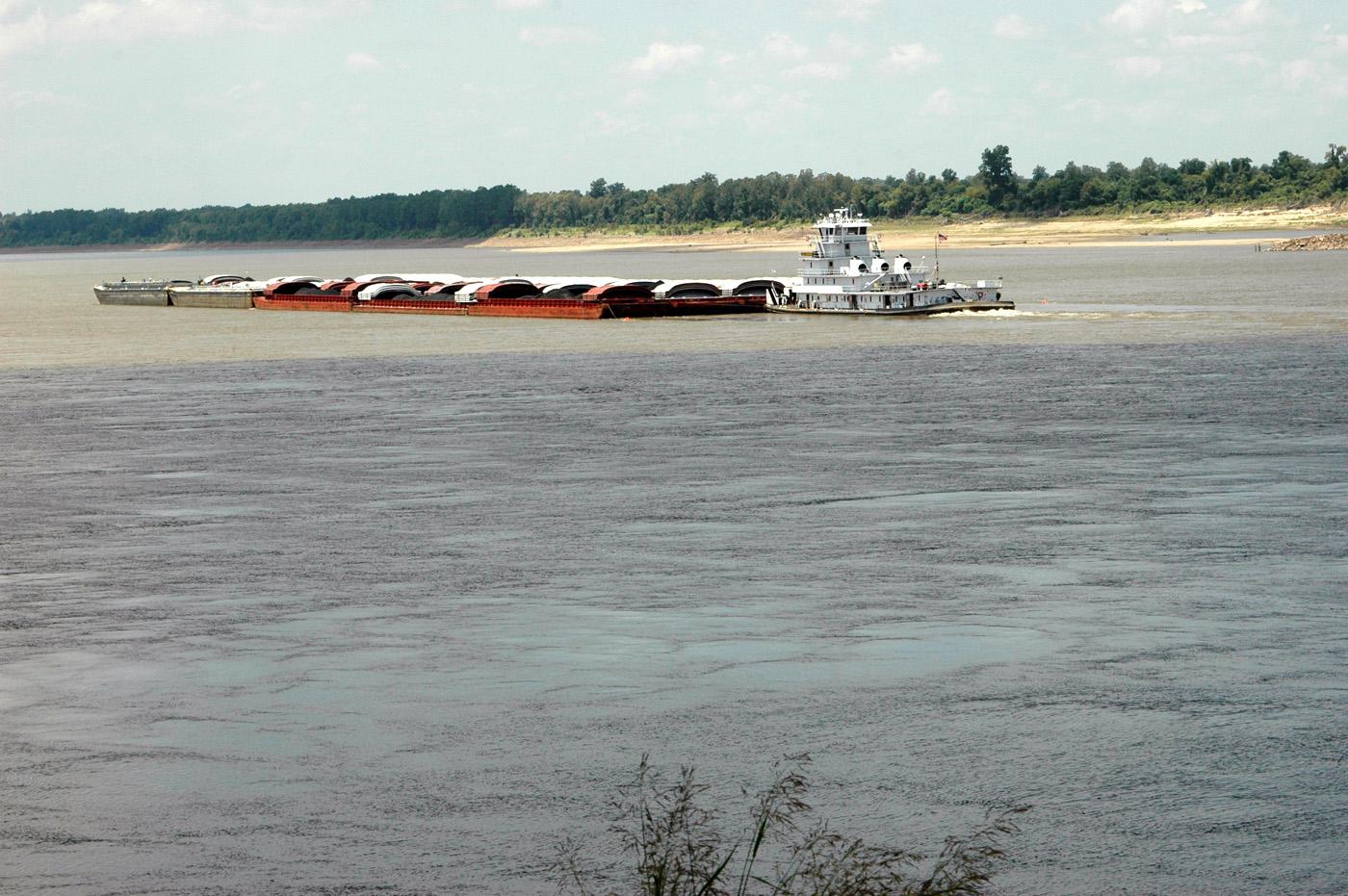Information Possibly Outdated
The information presented on this page was originally released on July 26, 2012. It may not be outdated, but please search our site for more current information. If you plan to quote or reference this information in a publication, please check with the Extension specialist or author before proceeding.
Midwest drought problems trickle down to Mississippi
MISSISSIPPI STATE -- Mississippi farmers may have survived one drought challenge only to face another as reduced river levels threaten a key transportation option.
Three exceptionally hot, dry weeks in June were taking a toll on the state’s crops when unseasonal July rains brought relief in time to salvage most fields. While Mississippi growers are not experiencing anything close to the dry conditions found across the nation’s Corn Belt, problems from the lack of water up north have trickled down to produce near-record lows on the Mississippi River.
Coahoma County Extension director Don Respess said some farmers plan to shell corn at higher-than-normal moisture levels to speed up the 2012 harvest.
“Farmers are worried about the river getting so low that they cannot load barges,” he said. “They can still truck it out, but barge traffic is the cheapest way to move grain.”
Respess said to prevent spoilage, growers will either spend more money to dry corn or watch their crop value drop because of the high moisture content.
“Harvesting earlier will increase the growers’ cost, but that might not be as bad as having full bins and nowhere to send it,” he said. “The bottom line is growers will get less money in their pockets.”
Respess said the state’s agricultural industry uses not only ports at Memphis, Greenville and Vicksburg, but also smaller sites, such as Rosedale, Friars Point and Helena.
Robert Maxwell, director of the Port of Rosedale in Bolivar County, said 1.5 million tons went through that port in 2011. Most of the cargo was agriculture-related -- about a third was fertilizer and other farm chemicals coming in, and the rest was farm produce going out.
“We are working closely with the Army Corps of Engineers to keep this port open so farmers can use it throughout the harvest season,” he said. “People need to appreciate the value that even these smaller ports on the local, state and national economies. We are fortunate this year to have extra funding that came through recovery money from last year’s flood.”
Maxwell said the corps has worked in the slack-water harbor, an area just over 3 miles away from the main current of the river. Water depth in that harbor varies greatly, so the focus is on the shallowest portions.
“Dredging based on river gauge predictions has bought us some time. We have increased the channel depths in places that were 6 to 10 feet to a new depth of 15 to 17 feet,” he said.
Kavanaugh Breazeale, a spokesman for the Vicksburg District of the U.S. Army Corps of Engineers, said one of the corps’ primary missions is to maintain a 9-foot-deep channel that is 300 feet wide in the Mississippi River and a 9-foot-deep channel in the ports to allow commercial traffic to pass.
“Over the years the corps has worked to improve the efficiency of the Mississippi River to keep it and its tributaries open to commercial traffic,” he said. “Thanks to dredging and channel improvements, the corps has ensured that commercial traffic is able to move up and down the river to support the national and local economies.”
Breazeale said the historic flood of 2011 deposited large amounts of silt in harbor and river beds, contributing to the need for extra dredging this year. The Vicksburg District is operating four dredges, funded by the Disaster Appropriations Relief Act of 2012, as part of the effort to restore and repair the Mississippi River and its tributaries following the flood.
Breazeale said the Vicksburg river gauge reached 57.1 feet during the 2011 flood. This year, on July 12, that gauge was at 4.9 feet. The last severe drought to hit the region was in 1988, when the gauge dipped as low as 1.6 feet below zero.
“Unfortunately, unless drought conditions subside and an adequate amount of rain occurs to raise water levels in the river, the district’s efforts will be overcome by the lack of rainfall,” he said.




